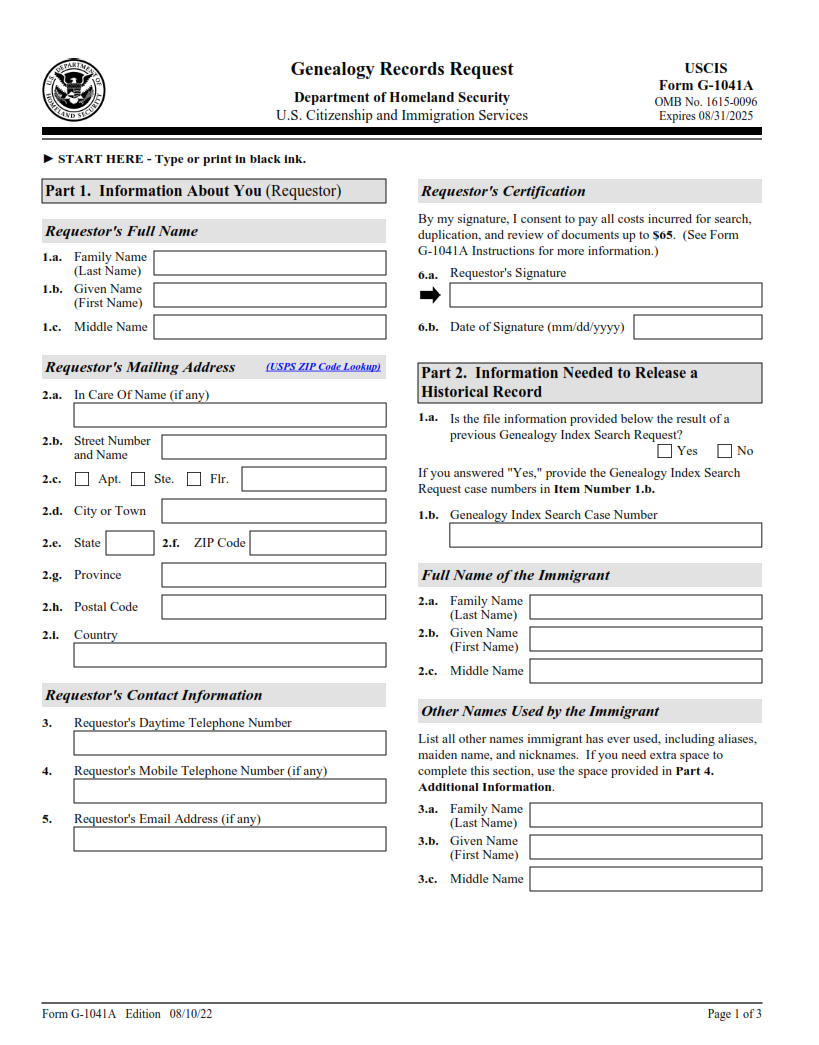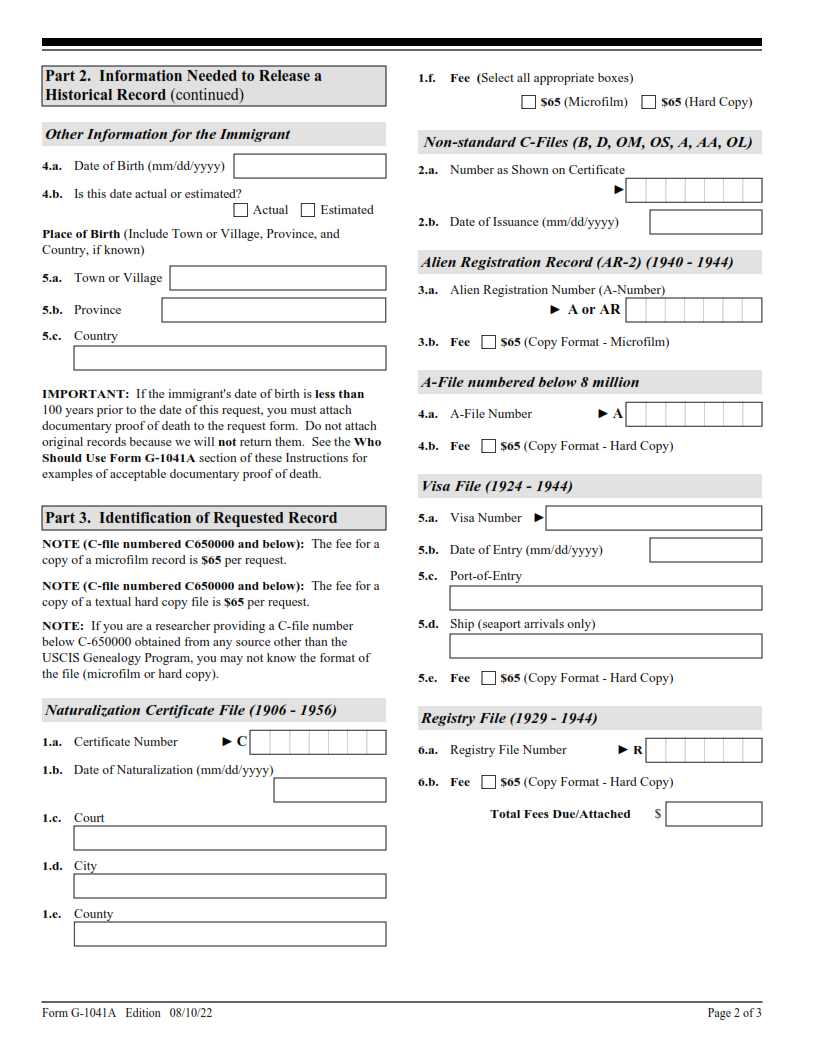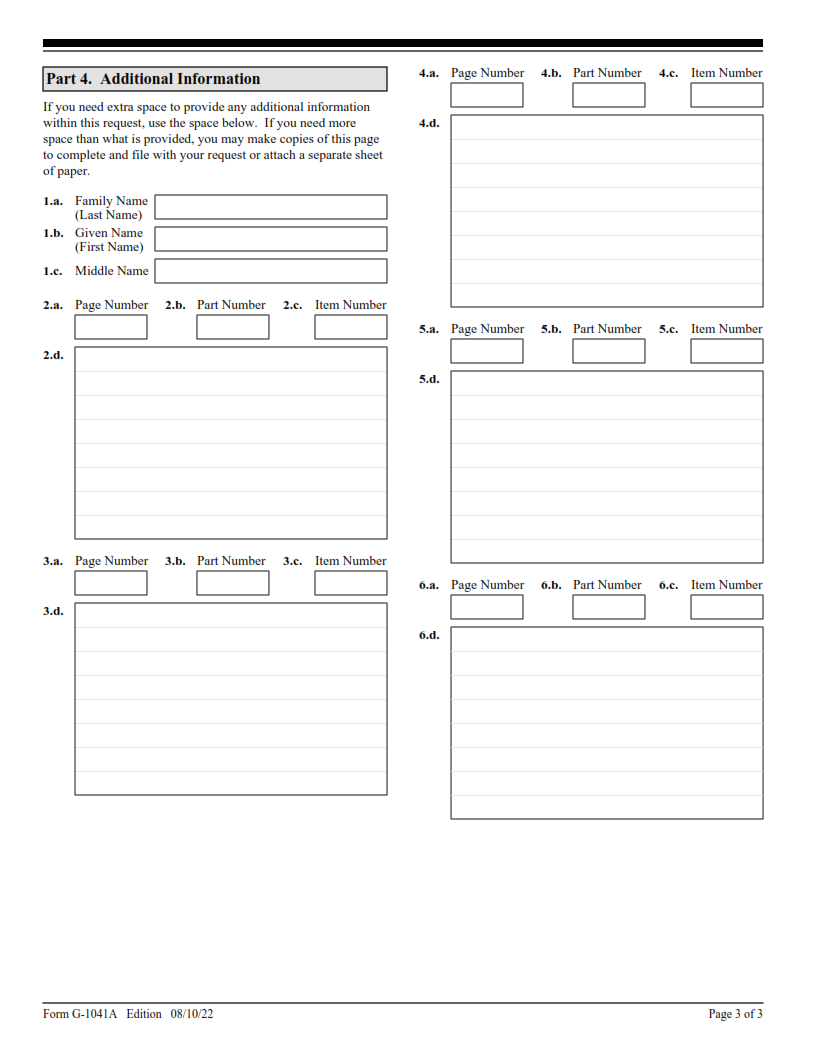FINDERDOC.COM – G-1041A Form – Genealogy Records Request – Genealogy research can be an incredibly fulfilling activity that allows individuals to uncover secrets of their family’s past. One of the most important documents for genealogists is the G-1041A Form, otherwise known as the Genealogy Records Request. This form is an official request from the National Archives and Records Administration (NARA) for access to historical government records which may provide information about a person’s ancestry or relatives. The purpose of this article is to discuss the G-1041A Form in further detail and explain how it can help those researching their family history.
Download G-1041A Form – Genealogy Records Request
| Form Number | G-1041A Form |
| Form Title | Genealogy Records Request |
| File Size | 347 KB |
| Form By | USCIS Forms |
What is a G-1041A Form?
The G-1041A Form is a document used in genealogy research to request records from the U.S. Citizenship and Immigration Services (USCIS). It can be used to request records held by USCIS, such as naturalization certificates, petitions for alien relatives, and other documents related to immigration history. This form is available online and can be requested via mail or fax.
When completing the G-1041A Form, it is important that all required information is included and provided correctly. This includes: the name of the requester, relationship to the applicant (if applicable), type of document being requested, date range of record being sought, address where records should be sent, payment method (check or money order), and proof of identification if applicable.
What is the Purpose of the G-1041A Form?
The G-1041A Form is a specific form used for genealogy records requests. It is an official document that must be filled out and filed with the National Archives to receive access to genealogical records stored within their facilities. The form allows requesters to provide additional information about the record they are searching for, such as the names of individuals being researched, birth dates and locations, and other relevant facts. It also includes a signature from both the requester and witnesses who can attest to its accuracy.
The primary purpose of this form is to ensure that only authorized persons have access to these sensitive records. By providing more detailed information on the G-1041A Form, researchers can demonstrate that they are qualified to gain access to these documents. Furthermore, it serves as a means of verification when making requests at other institutions outside of the National Archives as well.
Where Can I Find a G-1041A Form?
The G-1041A form is a genealogy records request form used by the National Archives and Records Administration (NARA). It can be used to request copies of genealogical records such as birth, marriage, death, census, immigration, and military service records. The form is available online on the NARA website.
To access the G-1041A Form online, go to the NARA website homepage at www.archives.gov and click on “Records” in the top navigation menu. Select “Genealogy Records Request” from the dropdown menu that appears. This will take you to a page where you can find information about requesting genealogical records from NARA as well as links to download or print out the G-1041A Form for your use.
G-1041A Form – Genealogy Records Request
The G-1041A form, or Genealogy Records Request, is a helpful tool for those interested in exploring their family history. This form can be used to request copies of immigration and naturalization records from the U.S. Citizenship and Immigration Services (USCIS). The form should be completed by anyone who wishes to obtain copies of these types of records for genealogy research, including attaining evidence for citizenship or qualification for benefits based on ancestry.
In order to complete the G-1041A form correctly, it is important that all information provided on the application is accurate. It must include the applicant’s full name and address as well as all necessary details about the requested document such as place of entry into the United States, date of birth and date of arrival into the United States.
G-1041A Form Example


